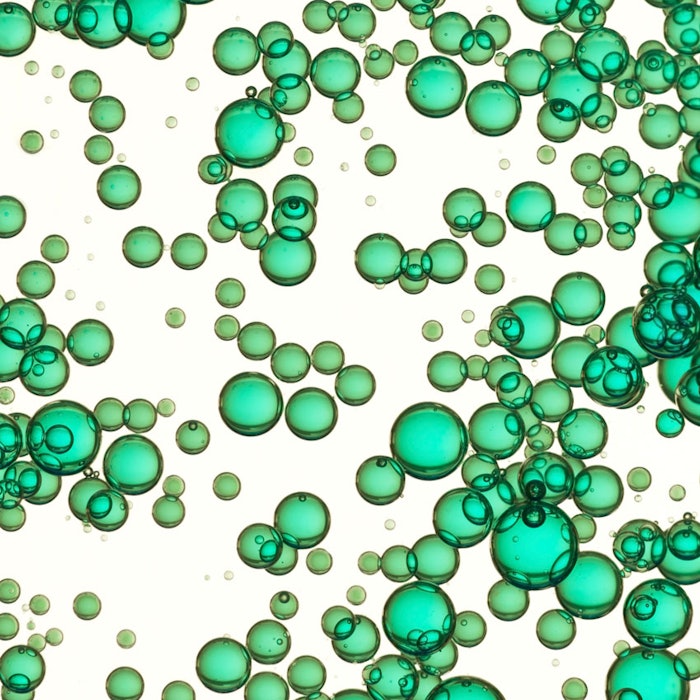
Never before has a microcapsule been created quite like the way Procter & Gamble inventors developed this one; at least, not according to the patent application. Its development came about from a need for polyurea or urethane-type microcapsules that can withstand harsh or challenging environments.
The resulting microcapsule is resistant to breakage and solvents, and is applicable for delivery in fabric enhancer, laundry, phase-change and other industrial and commercial applications, including cosmetics.
Specifically, the microcapsule includes a core and a shell. The latter is produced by reacting an isocyanate; a water-dispersible, oligomerized multifunctional amine (meth)acrylate; and a carboxyalkyl(meth)acrylate. The patent application explains further.
Bolstering encapsulates
U.S. Pat App 20180235893
Publication date: Aug 23, 2018
Assignee: The Procter & Gamble Company
Disclosed herein is an improved process for making a benefit agent delivery particle and consumer products incorporating it. The process includes three water phases. Water phase 1 consists of water and an initiator. Water phase 2 comprises water; a water-soluble or dispersible amine(meth)acrylate or hydroxyl(meth)acrylate; and a multifunctional (meth)acrylate. Water phase 3 comprises water; carboxyalkyl(meth)acrylate; and a base or quarternary ammonium acrylate.
The first two water phases are combined to prereact the hydroxy- or amine(meth)acrylate and the multifunctional (meth)acrylate. This forms a multifunctional hydroxyl-amine(meth)acrylate pre-polymer. The pre-polymer is then combined with water phase 3 and an emulsion is formed by emulsifying, under high shear agitation, a second composition into the first composition. The second composition includes an oil phase based on isocyanate and a benefit agent core material, such as a fragrance, perfume, phase-change material, biological active, antimicrobial, self-healing composition, lubricant or cooling agent.
The reaction forms a robust wall around the core material. During the process, charge can be tailored to a high zeta potential in the range from +70 to −70, at a pH of 7. According to these inventors, in many applications, a range from +40 to −65 can be useful. Optionally, aids can be included to increase deposition or adhesion of the microcapsules to surfaces such as paper, fabric, skin, hair, towels or other surfaces.
Patent application accessed on Aug. 24, 2018.










